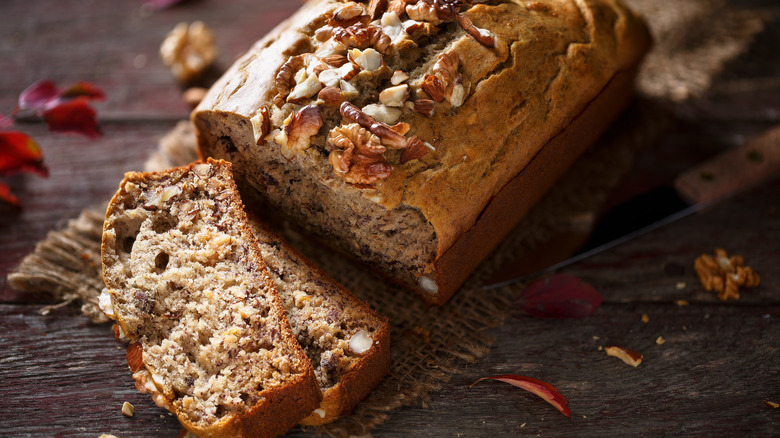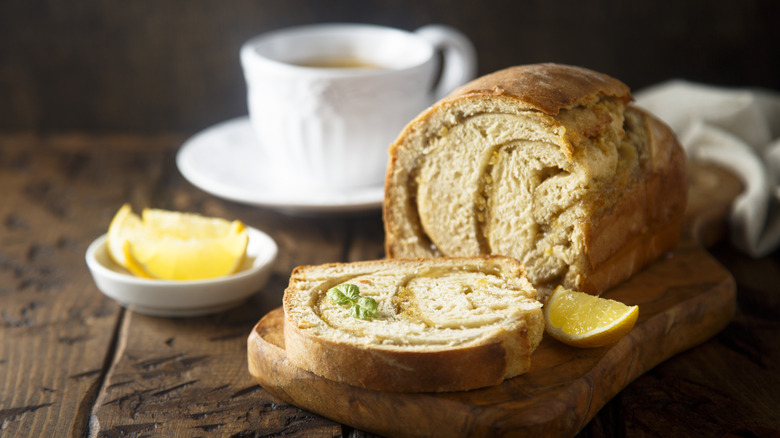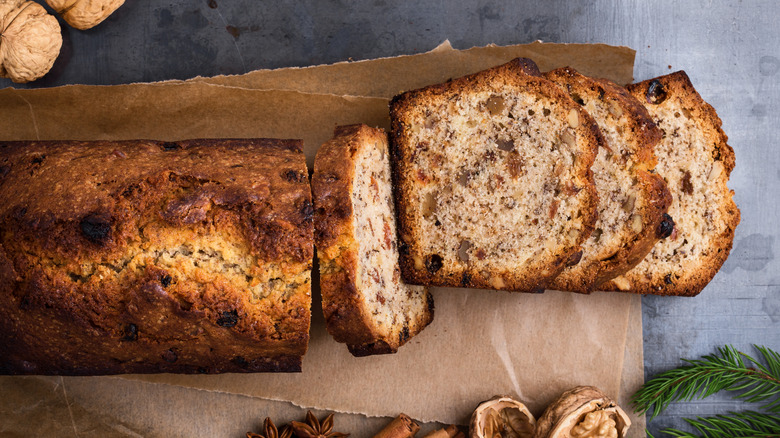What To Keep In Mind When Adding Inclusions To Your Bread Dough, According To An Expert
There are dozens of different types of bread which is great for those who get bored with the same old loaf. But if your bread routine is becoming too rote, there are plenty of ways to make homemade bread better; one of which is adding inclusions. To find out the ins and outs of bread inclusions, we talked to Nathan Myhrvold, founder of Modernist Cuisine and co-author of "Modernist Bread at Home."
"Additional ingredients, which are called inclusions, open up a wide world of possibilities for your baking," Myhrvold told Tasting Table. This could be something as simple as adding raisins and nuts or as complicated as a hazelnut butter swirl. "When adding inclusions to a dough, you must consider particle size along with the texture and other traits of the ingredient," Myhrvold continued. "This will help you determine how much of an ingredient you can add to your dough without compromising its integrity."
A primary factor in determining how to incorporate a specific inclusion is the texture or consistency, which we're going to use to help separate all possible inclusions into two groups: Solid inclusions and liquid inclusions. "Certain inclusions, like liquids or purees, will become an integral part of the dough's foundation," he explained. "Other types of additions, like swirls or chunks, will coexist within the dough."
How to add liquid inclusions to bread
"If you add wet ingredients like fruit or vegetable purees, you will need to adjust your dough recipe because the inclusions contain extra water," Nathan Myhrvold explained to Tasting Table. "To the point that they can substitute for much or all the water in a recipe." To determine the proper amount of water to add because of a liquid inclusion, you'll need to do a little math. Hydration in bread dough is equal to the weight of water divided by the weight of flour. So if you have 500 grams of water and 1,000 grams of flour, that means you have a hydration level of 50%.
The math gets a little tricky with liquid inclusions because, although they do contain enough water to affect hydration levels, they don't contain 100% water. Which means if you have a fruit puree that's 80% water, you'll only take 80% of the weight of the puree into consideration and adjust your water content from there. "Depending on the specific inclusion, you may also need to account for added sugar, starch, and acidity," Myhrvold added.
Keep in mind that the temperature of your inclusion matters as well, which is why it's important to warm milk before adding it to bread dough. If your inclusion is cold, it will negatively affect the yeast in the dough. Warming the inclusion in the microwave or over a stove is a quick way to avoid this problem.
How to add solid inclusions into bread
"Solid inclusions that cling to the dough but don't become part of it generally do not affect the integrity of the dough unless they are too big or too plentiful," Nathan Myhrvold advised. But there are plenty of inclusions that do need special attention.
"The texture and density of the bread and the inclusions play against one another," he continued. "To incorporate raw macadamia nuts, for example, you'll need bread with a dense crumb to support their weight and texture." This makes adding inclusions into bread recipes you're unfamiliar with difficult, but there are ways around it. "If you pressure-cook the nuts, they'll become soft enough to include in a tender brioche." The same idea applies to inclusions that are "leathery or sticky, such as whole dried figs, [which] won't work in a bread with a soft crumb." You also have to consider the mouthfeel of the inclusions. "In general ... inclusions shouldn't be too hard to bite," Myhrvold said. "If the inclusion snags on the knife when you're slicing and gets pulled out of the crumb, it's not the right inclusion for that type of bread."
If you're dying to try out a specific inclusion but are concerned it won't combine well, there are some tricks you can use. Large ingredients, for example, can be chopped up before being added so they don't strain the dough as much. It's important to know exactly when you should add inclusions to your bread as well, typically halfway through the folding process.


